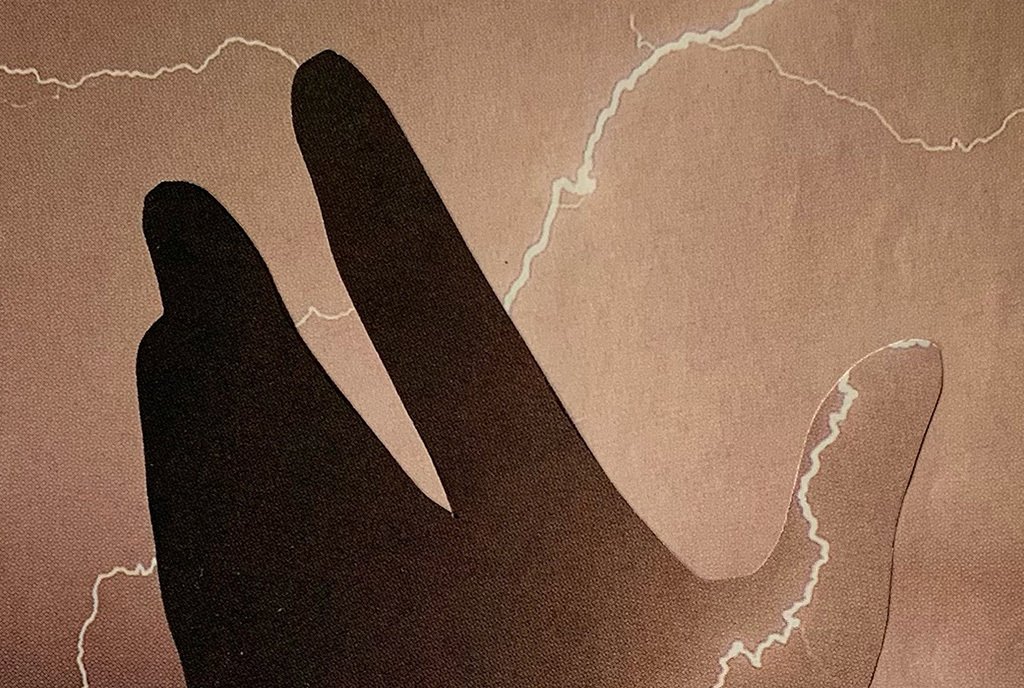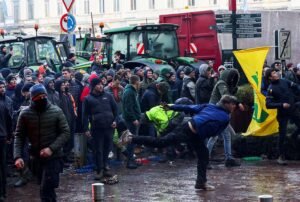
Editors’ note: This piece is from Nonprofit Quarterly Magazine’s fall 2023 issue, “How Do We Create Home in the Future? Reshaping the Way We Live in the Midst of Climate Crisis.”
Once, there was a very large star that blinked and went out. It was so far away that no one knew how big it was, or how dangerous, until it went out—which meant that no one was ready when the star collapsed.
(What does “collapsed” mean? Oh. It means that the star got so big it fell down inside itself. Now, let me finish.)
So the Scientists went to the Leaders, and they told them that the star had gone out and our planet was in danger.
“Are you sure?” asked the Leaders.
“Absolutely,” said the Scientists. Because, you see, they were very smart and had spent a long time studying the collapsed star before they told the Leaders anything. So the Leaders went to the Builders and said, “Tell us how to save everyone.” And the Builders looked at everything the Scientists had learned about the star, and then they did their own math, involving cities and ships and space travel.
“We can’t,” they said.
(I know what Grandpa told you, but he wasn’t there. You asked me to tell you a bedtime story. Do you want to hear the end of it or not?)
So the Leaders and the Builders and the Scientists all worked together, for weeks and weeks and weeks, trying to find a plan that would save as many people as they could. The Peacemakers called on the Traders—and some of the nearby friendly species, like the Aranesp and the Kochiin, arrived with cargo ships—
(Yes, just like this one.)
—that they changed, so people could ride in them.
The science ships stopped their science and became rescue ships—
(Well, I’m telling you that that’s what happened; if you want to hear your uncle tell this story, go ask him.)
Sign up for our free newsletters
Subscribe to NPQ's newsletters to have our top stories delivered directly to your inbox.
By signing up, you agree to our privacy policy and terms of use, and to receive messages from NPQ and our partners.
The Rock Scientists and Rock Builders turned the volcanic vents into factories—
(No, not stupid, just desperate)
—which was such a big project nobody had done it since we went to war with the Aranesp, when Grandpa was your age.
(Yes, the same Aranesp. Sometimes, people fight about little things but work together when bigger things happen.)
None of the plans worked, though. The star was too big, and its collapse was too sudden. There was no way to save everyone. The ships and the Leaders and the people themselves tried to find ways to make it fair, who should be saved and who was doomed, but how do you make a just system of—of—
(No, I’m okay, honey. My eyes just hurt.)
After we learned about the star and what it meant, people acted—well, like people: Some were cruel, and some were kind. Some took, and some gave. There was darkness, and there was light. It didn’t always balance out, but goddamn it, we tried our best. And the ships. Every ship that made it out had a mailroom, just for carrying messages from the damned to the delivered. Something not seen for four generations. We brought it back, now, because these were going to be the last messages ever, and they needed to be saved. If we couldn’t save the people themselves, we could at least save their final fucking words.
And every message…every single goddamn message spoke of love. And—good m-memories, and—and—hopes for—
(I’m sorry, honey. My eyes hurt, and I’m so tired. Aren’t you tired? It’s been a really long day. Story’s almost over, I promise.)
Anyway. When the last ship left orbit and made it to the safety radius, and the star’s damaging light finally landed, all that remained was the knowledge that our planet had once been filled with flawed people who were, ultimately, at their core, good and kind and doing their best.
(That’s the end. No more stories. Not tonight. Close your eyes and go to sleep.)
(I love you, too, baby. Sweet dreams.)










